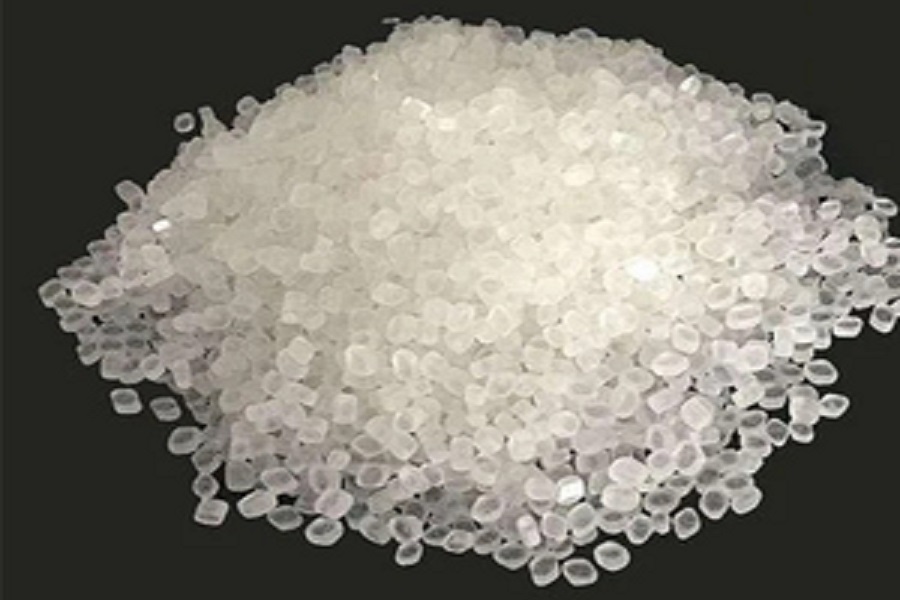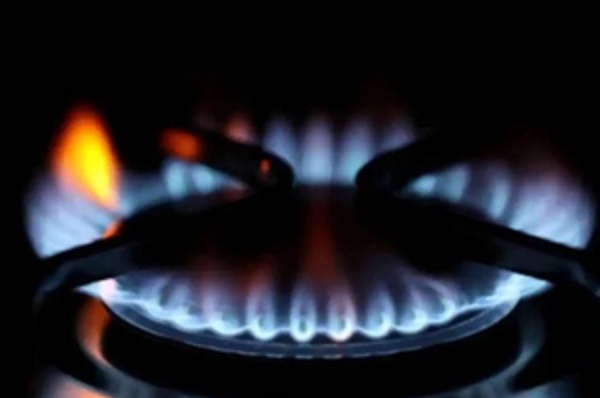Crudeoil trading range for the day is 7143-7357 - Kedia Advisory

Gold
Gold prices inched up by a marginal 0.05%, closing at 58930, against the backdrop of the 10-year US Treasury note yield nearing 4.3%. This yield level, approaching August's 15-year high of 4.34%, suggests growing confidence in the US economy's ability to manage inflation without significant adverse effects on growth or employment. US Treasury Secretary Janet Yellen's remarks reinforced this sentiment, indicating reduced urgency for looser monetary policy. Market consensus favors the Federal Reserve maintaining current interest rates in the near term, given the tightness in the US labor market and its resilience to higher rates. However, approximately 45% of the market anticipates a final 25 basis points rate hike in November due to persistent inflation concerns. Amidst these factors, secondary bond market prices faced pressure due to higher bond issuance and concerns about unsustainable US budget deficits. In India, discounts on physical gold reached their highest level in seven weeks, constraining purchases, while China saw premiums rise as optimism emerged from the country's economic support measures. From a technical perspective, the market saw short covering, with a 2.8% decline in open interest, settling at 11,485 contracts. Gold found support at 58850, with potential downside testing at 58765, while resistance levels were projected at 59060, and a breakout above this level might drive prices towards 59185.
Trading Ideas:
* Gold trading range for the day is 58765-59185.
* Gold steadied as 10Y US yield rose to 4.3% mark, approaching the 15-year high of 4.34%.
* US economy's resilience to higher rates aligned with bets that Fed will leave borrowing costs at a restrictive territory for an extended period.
* US Treasury Secretary Yellen stated that there is increasing confidence that the economy will be able to contain inflation without major blows to growth
Silver
Silver prices rose by 0.53% to settle at 71942, mainly attributed to the weakening US dollar, driven by optimistic inflation data from China. This data increased confidence in easing deflationary pressures within China, the world's second-largest economy. Additionally, Bank of Japan (BOJ) Governor Kazuo Ueda's comments fueled hopes of Japan moving away from negative interest rates. Silver's strength was further bolstered by solid industrial demand and tight supply conditions. The development of solar panel technologies, driven by efforts to reduce carbon emissions, contributed to the metal's demand due to its high conductivity. However, the Euro Area's economic outlook appears less favorable, with a projected 0.8% growth rate in 2023, down from the previous estimate of 1.1%. This downgrade is attributed to persistently high inflation levels, which are affecting consumption, and the impact of high-interest rates on economic activity, as indicated by the European Commission Forecast. Looking ahead, CME Group's FedWatch Tool suggests a 93.0% likelihood that the Federal Reserve will maintain interest rates in the upcoming meeting, but there is a 43.4% chance of another rate hike in November. From a technical perspective, the market saw short covering, with a 1.12% drop in open interest, settling at 16,933 contracts. Silver found support at 71635, with potential downside testing at 71330, while resistance levels were projected at 72270, and a breakout above this level might drive prices towards 72600.
Trading Ideas:
* Silver trading range for the day is 71330-72600.
* Silver gains as dollar weakened after latest inflation data from China
* Solid industrial demand and tight supply continued to provide support
* BOJ Governor Ueda stoked hopes that Japan could soon herald a new era away from negative rates.
Crude oil
Crude oil prices experienced a marginal decline of -0.14% to settle at 7248, with several factors influencing the market sentiment. Notably, Saudi Arabia and Russia's joint decision to extend voluntary supply cuts of 1.3 million barrels per day until year-end helped tighten global oil supplies. This move aimed to support oil prices, reflecting concerns about the supply-demand balance. However, concerns about sluggish economic growth in China, the largest global crude importer, continued to weigh on commodity markets. The International Energy Agency (IEA) revised down its 2024 oil demand growth forecast to 1 million barrels per day, citing lackluster macroeconomic conditions. In contrast, OPEC's August report maintained its 2.25 million barrels per day demand growth projection. The euro zone's growth outlook also faced adjustments, with expectations of slower growth in 2023 and 2024. The European Commission attributed this slowdown, in part, to a sluggish German economy, impacting the overall economic performance of the euro zone. On a positive note, U.S. crude oil inventories continued to decline for the fourth consecutive week. From a technical perspective, the market observed long liquidation, with a notable -16.81% drop in open interest, settling at 7175 contracts. Crude oil found support at 7196, with a potential downside test at 7143. Resistance levels were anticipated at 7303, and a move above this level might push prices towards 7357.
Trading Ideas:
* Crudeoil trading range for the day is 7143-7357.
* Crude oil stabilised as tightening global oil supplies helped offset concerns about demand
* Saudi Arabia and Russia jointly announced their decision to extend voluntary supply cuts totaling 1.3 million barrels per day
* However, concerns regarding sluggish economic growth in China continued to grip commodity markets
Natural gas
Natural gas prices experienced a modest increase of 0.51%, settling at 217, driven by several key factors influencing the market dynamics. Notably, the surge in global gas prices, particularly in Europe, played a significant role in supporting natural gas prices. Gas futures in Europe soared by 7% to reach a two-week high, with prices reaching approximately $12 per mmBtu at the Dutch Title Transfer Facility (TTF) benchmark. This surge was primarily attributed to ongoing strikes affecting Chevron's liquefied natural gas (LNG) projects in Australia and gas supply maintenance outages in Norway. On the domestic front, the United States witnessed a substantial daily drop in natural gas output, marking the largest one-day decline since early August. Preliminary data indicated a drop of about 2.6 billion cubic feet per day (bcfd), bringing the output to a preliminary 12-week low of 100.1 bcfd. It's worth noting that preliminary data often undergoes revisions later in the day, but this decline contributed to market sentiment. Weather forecasts also played a pivotal role in shaping natural gas market sentiment. Meteorologists predicted that weather conditions would remain mostly near normal from September 12 to 21. From a technical perspective, the market observed short covering, as open interest declined by -6.46%, settling at 43,372 contracts. Natural gas found support at 212.6, with potential downside testing at 208.3. On the upside, resistance levels were anticipated at 220.3, and a move above this level could drive prices toward 223.7.
Trading Ideas:
* Naturalgas trading range for the day is 208.3-223.7.
* Natural gas gains on a big daily drop in output and much higher global prices.
* Support also seen due to ongoing strikes at Chevron's LNG projects in Australia and gas supply maintenance outages in Norway.
* Capping those gains were forecasts for milder weather and lower demand
Copper
Copper exhibited a robust performance, surging by 1.7% to settle at 733.4, driven by positive developments in China's economic data. The key catalyst was China's encouraging economic indicators, especially in the context of being the world's leading consumer of copper. Notably, China's consumer prices returned to positive territory in August, registering a modest 0.1% increase. This reversal indicated a decrease in deflationary pressures, contributing to a sense of stabilization in the world's second-largest economy. Furthermore, there were signs of improvement in China's property market, a significant driver of copper demand. Several major Chinese cities recently lifted restrictions on home buying, demonstrating the government's commitment to reviving the crisis-hit property sector. These measures included reductions in mortgage rates for first-time homebuyers and adjustments to down payment ratios in select cities. However, while China's economic data was encouraging, there was also a degree of caution regarding the potential need for additional policy support to meet the year's economic growth target. Copper stocks on the Shanghai Futures Exchange (SHFE) increased for the third consecutive week, reaching 54,955 tons. From a technical standpoint, the market observed short covering, marked by a significant drop in open interest by -20.79%, settling at 5,353 contracts. Copper found support at 726.7, with potential downside testing at 719.8. On the upside, resistance levels were anticipated at 737.3, with a potential move above, driving prices toward 741.
Trading Ideas:
* Copper trading range for the day is 719.8-741.
* Copper prices rebounded as investors welcome improved economic data from China.
* China's consumer prices returned to positive territory in August
* Copper stocks on SHFE rose for a third consecutive week on Friday to 54,955 tons.
Zinc
Zinc exhibited a strong performance, surging by 2.21% to settle at 222.25, driven by developments in China's zinc market dynamics. Notably, social inventories of zinc ingots in seven major Chinese markets recorded a decline, totaling 93,300 metric tons as of September 8. This decrease of 2,300 metric tons from September 4 was particularly notable due to reduced shipments in Zhejiang. Smelters in the region increased shipments to downstream buyers, resulting in a noticeable reduction in inventories. China's refined zinc output for August 2023 reached 526,500 metric tons, representing a month-on-month decrease of 4.46%. However, on a year-on-year basis, this figure marked a substantial increase of 13.78%, although it fell below expectations. For the cumulative period from January to August, refined zinc production stood at 4.3 million metric tons, reflecting a year-on-year increase of 10.08%. In August, domestic zinc alloy production was 86,200 metric tons, indicating a 700 metric ton decrease compared to the previous month. Looking ahead, industry forecasts predict an increase in domestic refined zinc production in September 2023, with a projected rise of 11.85% compared to the previous month, reaching 563,600 metric tons. From a technical standpoint, the market witnessed fresh buying interest, accompanied by a substantial increase in open interest by 31.4%, settling at 4,859 contracts. Zinc found support at 218.8, with potential downside testing at 215.4. On the upside, resistance levels were anticipated at 224.4, with a move above potentially driving prices toward 226.6.
Trading Ideas:
* Zinc trading range for the day is 215.4-226.6.
* Zinc gains as China's zinc ingot stocks fall 2,300 mt to 93,300 mt.
* Zinc concentrate supply tightened as domestic zinc concentrate TCs fell along with imported zinc concentrate TCs.
* China's August refined zinc output was 526,500 mt, a decrease of 24,600 mt or 4.46% month on month
Aluminium
Aluminium exhibited strength, posting a gain of 0.9% to reach $201.65, driven by positive signals regarding China's economic stability, which have sparked hopes for increased demand. Notably, China's consumer prices returned to positive territory in August, with a modest 0.1% increase, while the decline in factory-gate prices slowed, signifying easing deflationary pressures. The Chinese government has been implementing various measures to support its property market, including the removal of home buying restrictions in multiple major cities. On the macroeconomic front, domestic policies in China have had a significant impact on the markets, fostering optimism. However, the pace of interest rate hikes by central banks such as the Federal Reserve (Fed) and the European Central Bank (ECB) remains a key variable influencing short-term macroeconomic trends. Russian-origin aluminium stocks in London Metal Exchange-approved warehouses remained stable in August compared to the previous month, accounting for 81% of the total or 183,650 metric tons. China's aluminium production for August 2023 reached 3.623 million metric tons, marking a year-on-year increase of 3.9%. From a technical perspective, the market witnessed short covering, accompanied by a notable decrease in open interest by -3.69%, settling at 4,094 contracts. Aluminium found support at 200.8, with the potential for testing lower levels at 199.7. On the upside, resistance was anticipated at 202.5, with a potential move above targeting 203.1.
Trading Ideas:
* Aluminium trading range for the day is 199.7-203.1.
* Aluminium gains as signs of economic stabilisation in China sparked demand hopes
* In August 2023, China's aluminium production hit 3.623 million mt, up 3.9% yoy.
* Russian aluminium in LME system steady at 81% in August
Cottoncandy
Cottoncandy prices surged by 1.13% to settle at 61060, driven by concerns over supply from key U.S. growing regions. The U.S. Department of Agriculture (USDA) reported that 31% of the cotton crop was in good to excellent condition, with a slight decline following Hurricane Idalia's passage. China's cotton production for 2023/24 has been lowered to 5.9 million metric tons due to reduced planted areas, according to the USDA's Foreign Agricultural Service. The USDA's August WASDE report also adjusted cotton forecasts, reducing production by 2.7 million bales while increasing consumption by 500,000 bales. India faced challenges with cotton production, experiencing a 3.65 lakh hectare drop in sowing compared to the previous year. Poor monsoon conditions in Gujarat, mill closures, and low stock levels of old cotton crops contributed to tight local supplies. New cotton crops have begun arriving in parts of North and South India, with prices above the minimum support price (MSP). Early arrivals of around 3,000 bales are expected to pick up demand, especially after September 15. In Punjab, cotton arrivals have significantly dropped, with only one-third of the previous year's quantity recorded. This year, arrivals in Punjab for the 2022-23 season reached 8.7 lakh quintals, compared to 28.89 lakh quintals for the entire 2021-22 season. Overall, cotton markets are grappling with supply concerns, both in the U.S. and China, which are influencing prices. India's situation is compounded by adverse weather conditions and a drop in sowing. The cotton market will closely watch how these factors evolve in the coming months.
Trading Ideas:
* Cottoncandy trading range for the day is 60590-61630.
* Cotton gains on some concerns over supply from key U.S. growing regions.
* However, heavy rainfall in China's Xinjiang region is expected to impact cotton quality and quantity.
* China's cotton production was lowered to 5.9 million metric tons on reduced planted area for 2023/24
* In Rajkot, a major spot market, the price ended at 29388.85 Rupees gained by 0.29 percent.
Turmeric
Turmeric prices experienced a significant decline of -4.65%, settling at 14,120, primarily driven by profit booking after recent gains. Initially, prices had risen due to improved buying activity linked to increased festive demand. The market had also been supported by limited supplies and dim production prospects, particularly in Maharashtra, where turmeric cultivation area has fallen. Encouragingly, the upcoming week is expected to bring normal to above-normal rainfall to Maharashtra and Telangana, which could enhance the growth of turmeric crops. Concerns persist regarding the decline in turmeric cultivation in Maharashtra, which contributes to uncertainty in price trends and supports higher prices. Export inquiries have been lackluster at prevailing levels, adding pressure to prices. The shift in farmers' focus has led to expectations of a 20-25 percent decrease in turmeric sowing this year, notably in states like Maharashtra, Tamil Nadu, Andhra Pradesh, and Telangana. During April-June 2023, turmeric exports surged by 16.87 percent to reach 57,775.30 tonnes compared to 49,435.38 tonnes exported during the same period in 2022. However, India is grappling with its lowest monsoon rains in eight years, with El Niño weather conditions expected to further reduce precipitation in September. From a technical standpoint, the market observed long liquidation, with open interest remaining unchanged at 15,210 contracts. Prices saw a significant decline of -688 rupees. Key support levels are expected at 13,816, potentially testing 13,514, while resistance is likely at 14,634, with the possibility of prices reaching 15,150.
Trading Ideas:
* Turmeric trading range for the day is 13514-15150.
* Turmeric dropped due to profit booking after prices gained as buying activities has improved.
* Supplies are down whereas production prospects are also looking bleak
* The upcoming week is expected to bring normal to above-normal rainfall to Maharashtra and Telangana
* In Nizamabad, a major spot market, the price ended at 13817.75 Rupees dropped by -1.53 percent.
Jeera
Jeera prices witnessed a significant decline of -4.22%, settling at 62,505, primarily driven by profit booking after recent price gains. Initially, prices had surged due to increased demand during festivals, as stockists showed strong interest given the diminishing stockpiles held by millers. However, the current price competitiveness of Indian cumin doesn't favor exporters, which is likely to keep export activity subdued in the coming weeks. China, a major buyer of Indian cumin, has reduced its purchases in recent months, impacting overall exports from India. The uncertainty surrounding China's potential purchase of Indian cumin in October-November before the arrival of the new crop further complicates market dynamics. Additionally, drier weather conditions in Gujarat are expected to lead to increased arrivals, which may limit upward price movements. Jeera exports during April-June 2023 showed a rise of 13.16%, totaling 53,399.65 tonnes compared to 47,190.98 tonnes exported during the same period in 2022. However, India is facing its lowest monsoon rains in eight years, with El Niño weather conditions expected to further reduce precipitation in September. From a technical perspective, the market observed fresh selling, with open interest increasing by 11.64% to settle at 3,828 contracts. Prices saw a substantial decline of -2,755 rupees. Key support levels are expected at 61,120, potentially testing 59,730, while resistance is likely at 64,350, with the possibility of prices reaching 66,190.
Trading Ideas:
* Jeera trading range for the day is 59730-66190.
* Jeera dropped due to profit booking after prices gained due to a decrease in supplies.
* The increased demand for jeera during festivals has piqued the interest of stockists
* Drier weather condition in Gujarat will also lead to rise in arrivals that will cap the upwards move.
* In Unjha, a major spot market, the price ended at 61348.85 Rupees gained by 0.03 percent.
Views express by all participants are for information & academic purpose only. Kindly read disclaimer before referring below views. Click Here For Disclaimer























